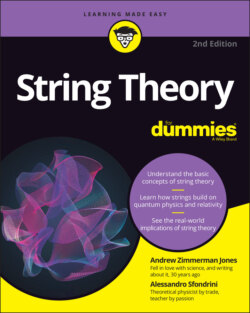Читать книгу String Theory For Dummies - Andrew Zimmerman Jones - Страница 54
Explaining what happens to a black hole (sort of)
ОглавлениеA major motivating factor for the search for a theory of quantum gravity is to explain the behavior of black holes, and string theory appears to be one of the best methods of achieving that goal. String theorists have created mathematical models of black holes that appear similar to predictions made by Stephen Hawking more than 50 years ago and may be at the heart of resolving a long-standing puzzle within theoretical physics: What happens to matter that falls into a black hole?
Scientists’ understanding of black holes has always run into problems, because to study the quantum behavior of a black hole, you need to somehow describe all the quantum states (possible configurations, as defined by quantum physics) of the black hole. Unfortunately, black holes are objects in general relativity, so it’s not clear how to define these quantum states. (See Chapter 2 for an explanation of the conflicts between general relativity and quantum physics.)
String theorists have created models that appear to be identical to black holes in certain simplified conditions, and they use that information to calculate the quantum states of black holes. Their results have been shown to match Hawking’s predictions, which he made without any precise way to count the quantum states of a black hole.
This is the closest that string theory has come to an experimental prediction. Unfortunately, there’s nothing experimental about it because scientists can’t directly observe black holes to this level of detail. It’s a theoretical prediction that unexpectedly matches another (well-accepted) theoretical prediction about black holes. And, beyond that, the prediction only holds for certain types of black holes and hasn’t yet been successfully extended to all black holes.
For a more detailed look at black holes and string theory, check out Chapters 9, 13, and 16.
